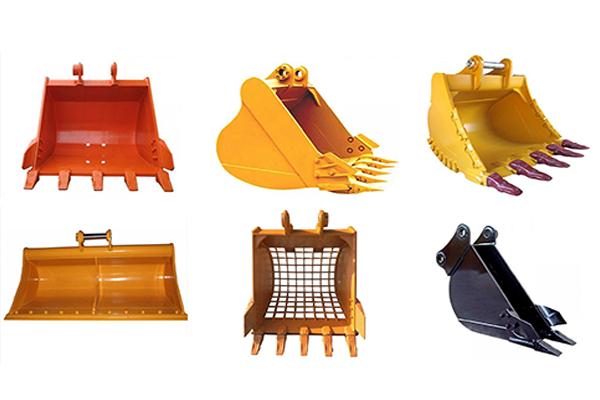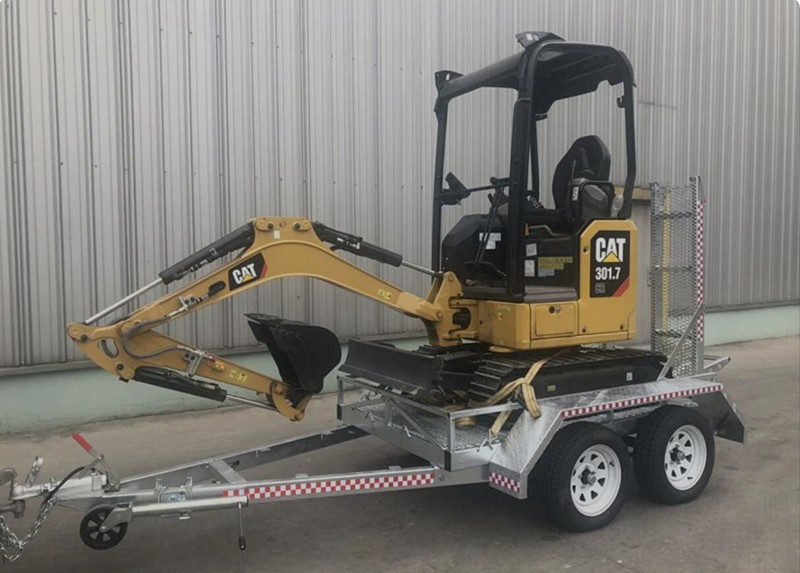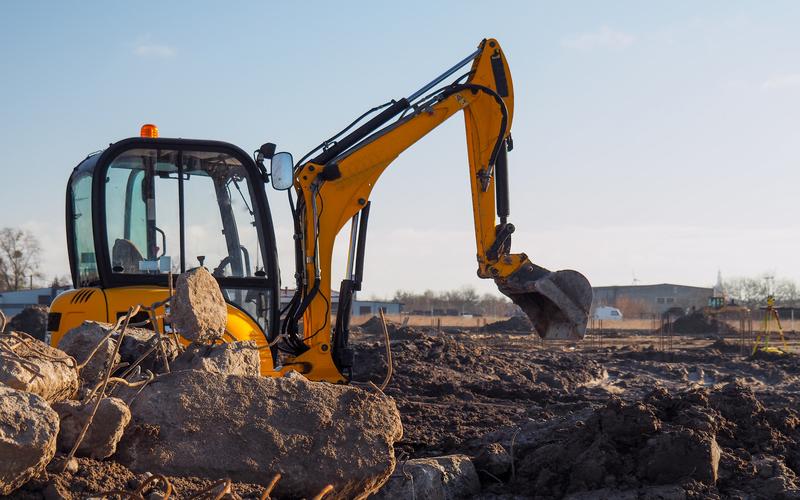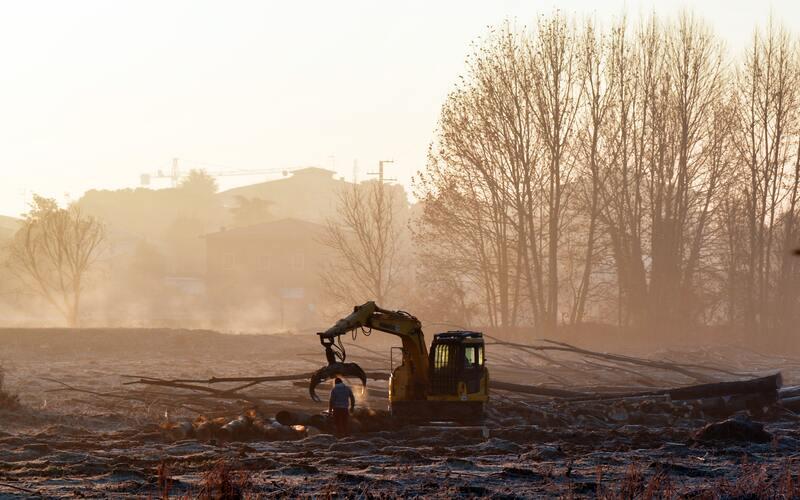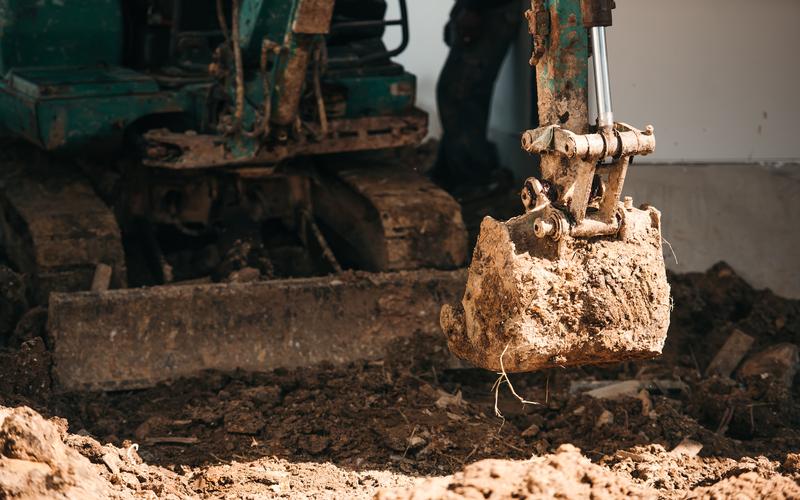Mini excavator
Mini excavators have always been efficient when it comes to handling different tasks. Its smaller stature allows the user to fit it in tighter spaces and work more conveniently in other locations.
Nowadays, thanks to the many attachments available for the machine, you can use it for different applications besides construction.
These are the frequently asked questions about Mini excavator attachments.
What Are The Attachments For A Mini Excavator?
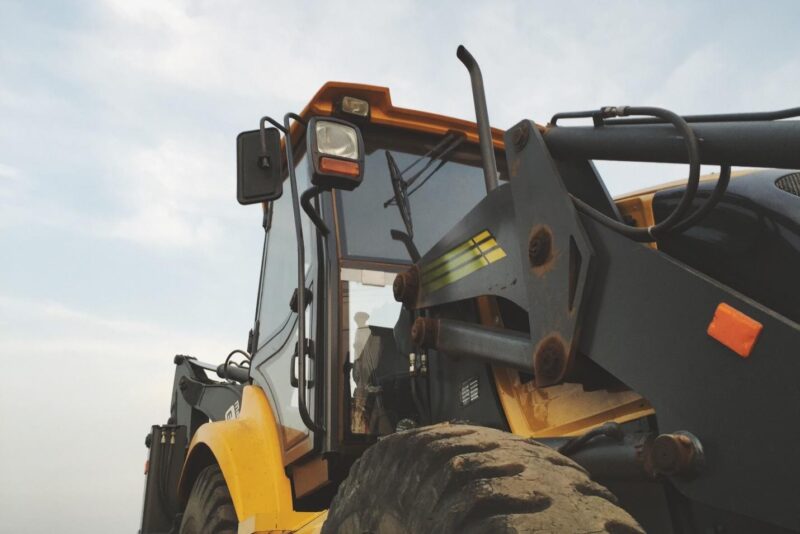
Mini excavator attachment
Mini excavators are helpful, but the many attachments available make them even more convenient for all sorts of applications. These are the mini excavator attachments that can help you with your projects:
1. Bucket
A bucket is the standard attachment for all excavators unless you request another upon purchase or renting. This attachment is often made of hard steel and sometimes features teeth that make it more convenient for digging through tough soil.
There are several types of buckets available for different applications, and you can interchange them for one another through its hitch. They are as follows:
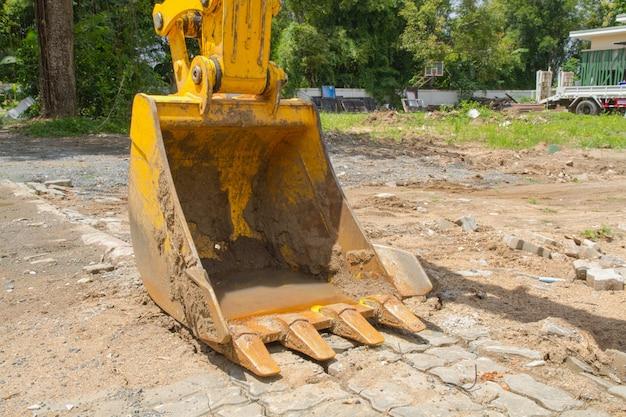
Digging bucket
A digging bucket is one you will often see in a mini excavator. They are mostly for handling lighter materials and come with short blunt teeth to penetrate the ground.
You can use a digging bucket with the following:
- Dirt
- Clay
- Topsoil
- Sand
- Gravel
Trenching bucket
Trenching buckets are used to create trenches. You can use them to navigate smaller spaces for digging drains, ducting, and piping.
These buckets are narrower than others and equipped with flat, sharp blades that penetrate dense and compact materials. They come in different sizes, and you can also get one for a mini excavator.
Grading bucket
Grading buckets are used for more delicate applications, such as backfilling holes, grading, unloading materials, and leveling.
This type of bucket has smoother and wider cutting edges, which is why they are mostly used with soft soil and other materials. Landscapers and road constructors favor them because they can efficiently perform many utility works.
Heavy-duty buckets
Heavy-duty buckets are specifically designed for their strength and abrasion resistance. They are often used for tougher applications because they are not easily damaged compared to other buckets.
This type of bucket’s most common application involves handling various kinds of rocks, including:
- Compact clay
- Blasted rock
- Granite
- Basalt
Specialized digger buckets
Aside from the buckets listed above, additional buckets are designed for specific applications. These are some of those:
- V-bucket: These are for digging trenches in a v-shape.
- Riddle bucket: Riddle buckets allow smaller soil particles to pass through, such as sands and smaller rocks.
- Rock bucket: Used for screeding soil to remove smaller debris.
- Hardpan bucket: Like the rock bucket, this type of digger bucket has ripper teeth on each side that helps loosen the soil upon use.
2. Rakes
For clearing a job site from different debris, it is more efficient to use a rake. They come in three, four, and five-tines that help clear out more conveniently while leaving only dirt behind.
You can use this to clear out tree branches, brush, concrete debris, and other similar materials. Rakes are useful for both construction and forestry applications.
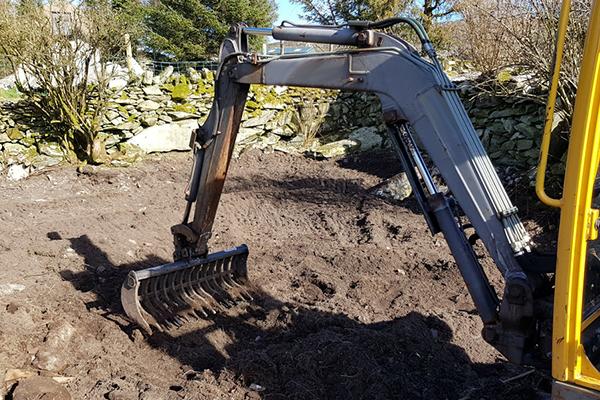
3. Grabs
Excavator grabs are one of the most useful attachments available for excavators. It makes picking up things on a construction or farm site easier. Different weights of grabs are available, and you should find the one that best suits your available mini excavator.
You can also choose based on the number of claws available on the grab. A standard grab will have five claws, but you can get one with four or even more than that.
In most cases, people use grabs with their thumbs for better stability. Grabs are great for picking things up, and the thumb can help keep the materials in place.
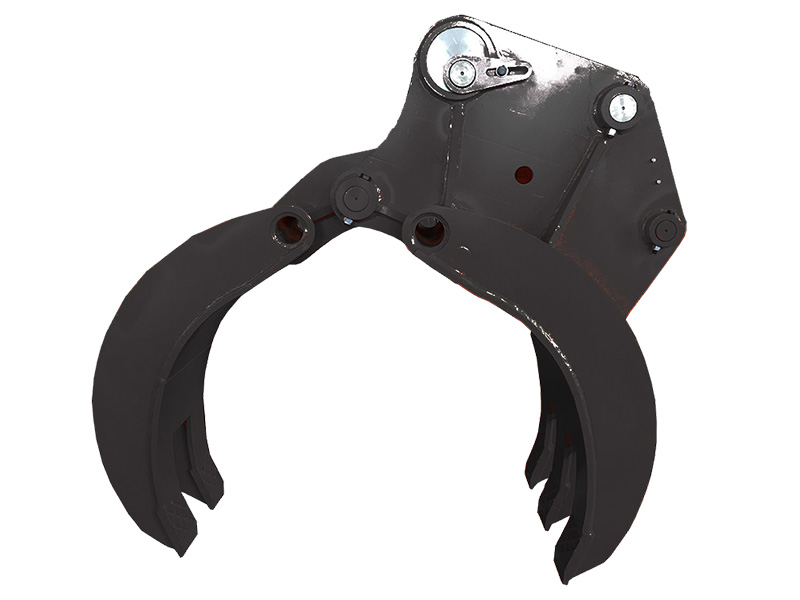
4. Grapple
Grapples are more common for forestry applications, but you can also use them during demolition, waste handling, construction, and more. It usually has two large clamps that allow it to hold onto oddly-shaped materials.
5. Pulverizers
Excavator pulverizers are also often called concrete crushers, being their main purpose. This type of mini excavator attachment is mostly used for construction and concrete cycling.
Pulverizers are great for removing reinforcement steel from concrete. It breaks the concrete into smaller pieces to fall, leaving the steel behind. Some of them may have removable teeth, so they will be easier to replace when it’s worn out. Others also have wire cutters near the hinge, so separating the steel from the concrete is easier.

6. Rippers
Ripper attachments have pointed ends and rip through tough soil and frozen surfaces. You can also use it to remove root systems and tree stumps. Rippers make digging easier and more productive, especially in areas where a regular digger cannot penetrate.
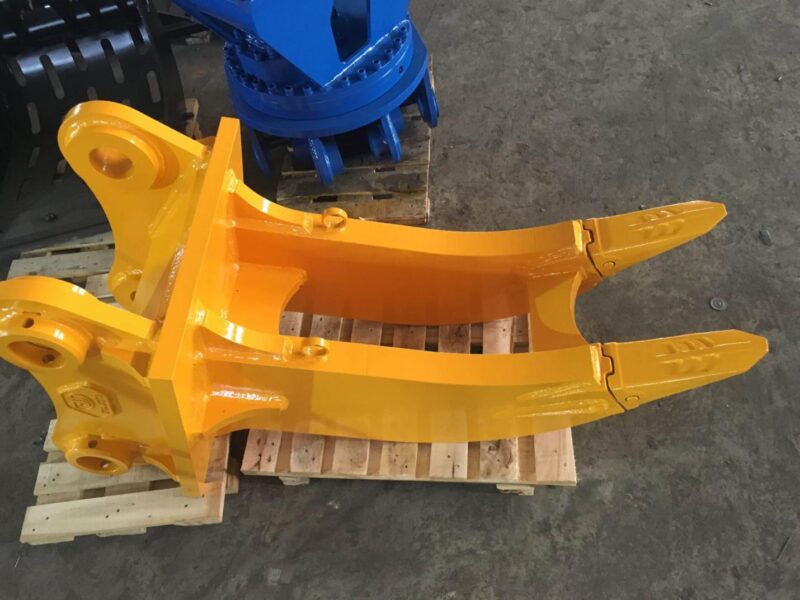
7. Thumb
A thumb is an additional attachment that helps keep materials in place, usually alongside a bucket. It is best for gripping oddly-shaped materials that do not fit inside a digging bucket, like tree stumps and concrete debris.
8. Concrete breaker
Another useful mini excavator attachment is the concrete breaker for breaking down tough materials. It is called a hammer and provides high-impact vibrations to break hard surfaces.
There are a few hammer shapes available for this one, and you can choose which is best for your current project. They are as follows:
- Moil: Mostly used for demolition and trenching.
- Chisel: For concrete excavation and demolition, where an angled tip is useful for penetration.
- Blunt: Mostly for crushing operations because it can transfer the impact to a wider surface area
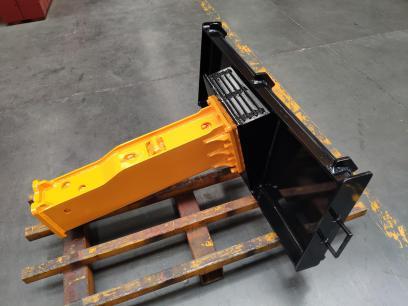
9. Mulchers
Mulchers are for forestry applications and environmental cleanup. They can cut through vegetation, undergrowth, and other organic materials and turn them into mulch.
Aside from its purpose of removing biodegradable materials, you can even make a profit from the mulch it produces by selling them to other people.
10. Auger
Augers are among the mini excavator attachments that can help you dig through the earth. As you go, it can transport the dug soil directly out of the hole. You can use this for installing pillars, foundations, planting trees, and other shrubs.
Augers are versatile tools, and you can use them for many jobs. It can dig through rocks, shale, and hair soil much easier because of its power.
They can be short, long, wide, or narrow. Augers can also come in different flight styles and produce different results.
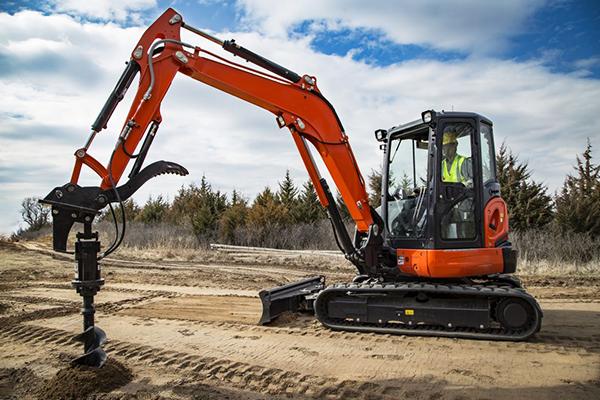
How To Change A Mini Excavator Attachment?
When you rent a mini excavator, it usually comes with three bucket attachments and a ripper. However, it still depends on the type of work you plan on working. To interchange the attachments, here are the basic steps that apply to most machines:
Step 1: Remove the pin
The first step in changing mini excavator attachments is lifting the bucket slightly above the ground. Then, you can remove the safety pin by pulling the ring and sliding it out.
Step 2: Detach the bucket from the arm
Before detaching the bucket, you’ll need to lift it a little so that it won’t put too much weight on the pin. When the pin is holding too much weight, you cannot remove it.
The correct position is to open the bucket to the machine’s direction while the top faces downward. Once you do that, you can remove the bucket safely.
You can also push the bucket using your body weight. Do it a couple of times until the pin becomes loose. If this technique doesn’t work, you must position the bucket at a different angle.
Watch when you loosen the pin to see which angle works best.
Step 3: Remove the bucket
After removing the bucket pin, you can hitch it out until it drops to the ground. Be sure it is still close to the ground so the impact will not be as strong, and avoid hitting your feet.
Step 4: Prepare to pick up the bucket
The next step is to replace the safety pin, but you must pick up the bucket first before doing this. Ensure that the hitch is in the correct position, which is far side and squared to the mini excavator. This way, it will be easier for you to pick it up.
Reduce the throttle speed to the slowest position.
Step 5: Pick up the bucket and replace the safety pin
Place the bucket on the machine’s arm to put the bucket pin into the excavator hitch. Once it slides to its correct position, line it up to the bucket holes and ready the pins. Replace the bucket pin and make sure it goes way through.
Secure the bucket, and you’re ready to work.
What Kind Of Jobs Can You Do With A Mini Excavator?
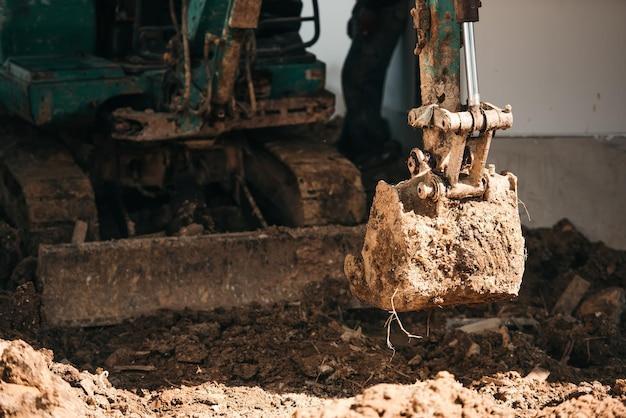
Mini excavator jobs
With the many attachments available for a mini excavator, this can help you finish all sorts of jobs that require large machinery. Its smaller size is beneficial for fitting in tight spaces and other areas that standard-sized excavators won’t do.
These are some of the jobs that you can do with a mini excavator and the type of attachment you’ll need:
Construction
There are certain types of tasks on a construction site. The attachments you will primarily use in this application are the following:
- Augers: This attachment is used for drilling support posts for fences and other structures.
- Rippers: Rippers can cut through earth, vegetation, rocks, and ice to make way for construction.
- Compactor attachments: This comes with several designs, such as rollers and plates, that help finish some tasks more quickly.
Landscaping
A mini excavator of 1 ton or 2 ton is extremely useful in landscaping. Its lighter weight would not damage the ground, and you can use it for several tasks, including:
- Tearing down small structures
- Carrying away debris
- Mulching
- Placing and removing trees and stumps
- Installing and removing pools
- Breaking down concrete decks and sheds
- Raking and mowing grass
Some attachments for landscaping are buckets, thumbs, grapples, rakes, and augers.
Maintenance and utility
You can also use mini excavators for utility and maintenance work. They cost less, but you can do the same tasks. This includes working with sewer lines, pole installation, and digging trenches.
Farming
Mini excavators can be used for many applications in farming, like moving hay bales, lifting feed bags, mowing grass, and digging holes for fences.
Material Handling
Mini excavators are powerful lifters, so you can use them to accommodate materials of all shapes and sizes. You can use additional attachments like grabs and thumbs for more stability.


